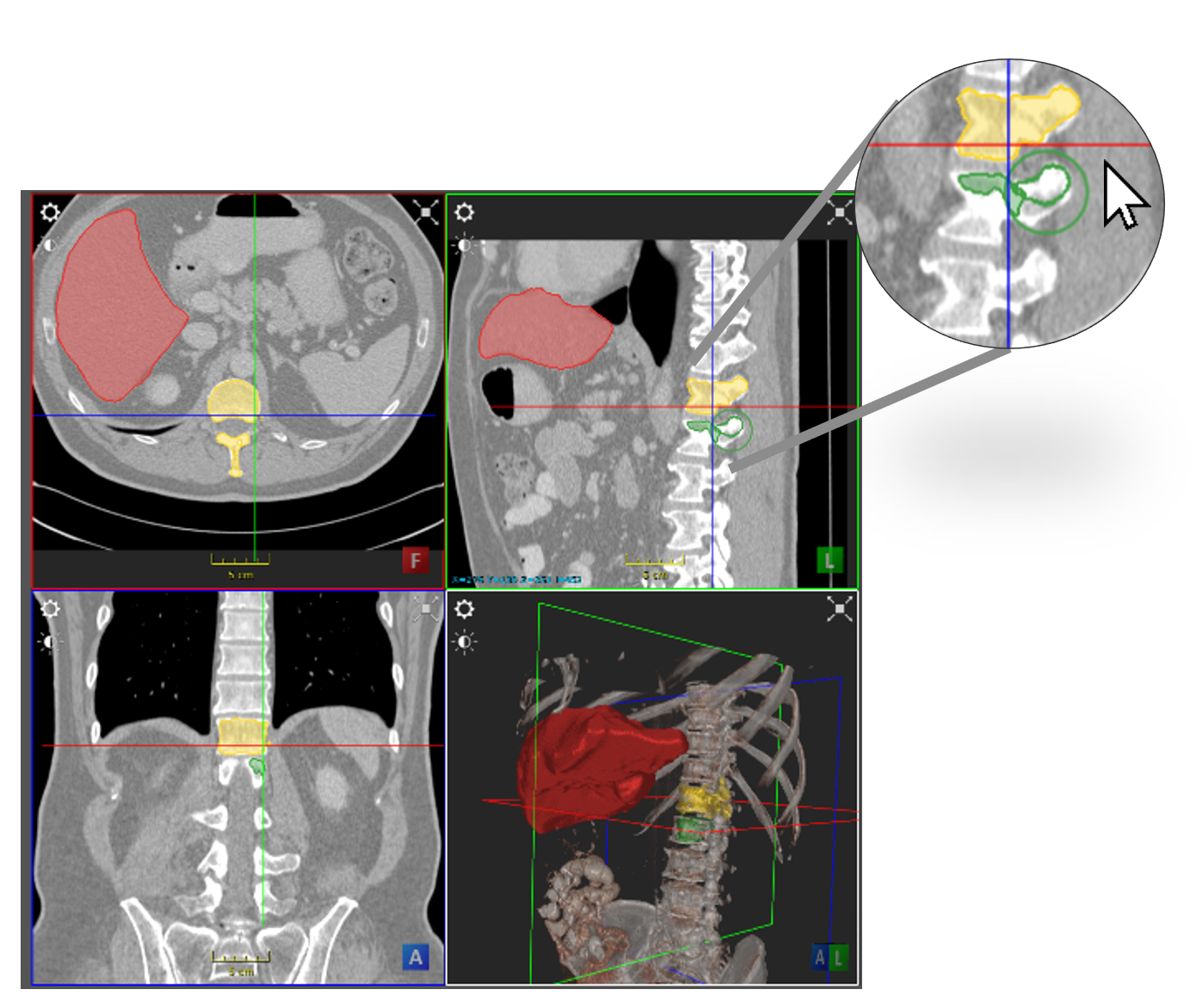Segmentation is a very common task in image analysis and consists in extracting the contours of a structure of interest in the image. ImFusion Suite and ImFusion Labels help users segment any organ, from manual labeling of 2D and 3D data sets to (semi-)automatic segmentation of any anatomy in 2D and 3D and a tight integration with machine learning modules.
Interactive Segmentation
Our software features a powerful interactive segmentation,allowing users to segment structures in both 2D and 3D images. The user simply needs to delineate regions within the image that correspond to the desired structure, as well as regions outside of it(see figure). At any time, the segmentation can be previewed and user input can be fine-tuned. Once the desired result is achieved, it can be exported conveniently as either a label map or a mesh.
This algorithm can be combined with a machine learning model such that the prediction of those regions can be automated, thereby transforming this method into a comprehensive and fully automated pipeline.
A variety of post-processing methods on segmentations are available, including smoothing, decimating, cropping, merging, connected component analysis, etc.

Interactive segmentation of a 3D volume in our software. As the user paints inside (green) and outside (red) regions, the segmentation (yellow) is updated and can then be exported as a mesh or a label map.

User-friendly manual labeling with smart adaptive brush
ImFusion Suite and ImFusion Labels also include algorithms designed to automatically enhance and refine existing segmentations. These algorithms can be utilized to improve segmentations generated by other software tools or through manual annotation processes. In the figure herebelow, we show the refinement of a femur segmentation in a CT volume using image matting.

(Top Left) Original image. (Top Right) Comparison of the two segmentations, the old one is in red while the new one is in green. (Bottom Left) Mask corresponding to the original segmentation. (Bottom Right) Refined mask after image matting.
Each segmentation problem exhibits unique characteristics, such as prior knowledge regarding appearance and shape. Consequently, segmentation algorithms need to be customized to ensure robustness. Therefore, our portfolio includes a variety of specialized algorithms, as illustrated in the figures below.






